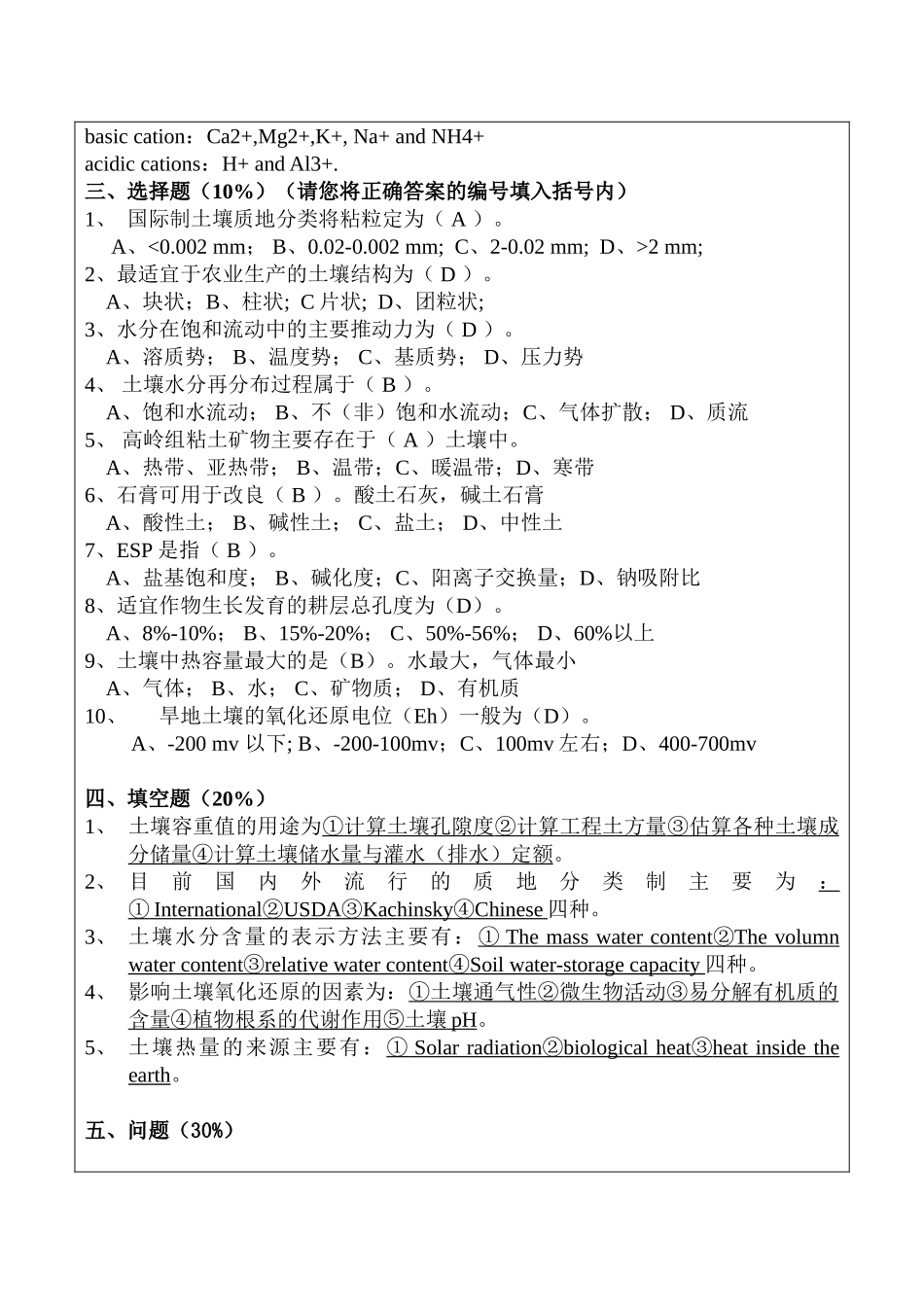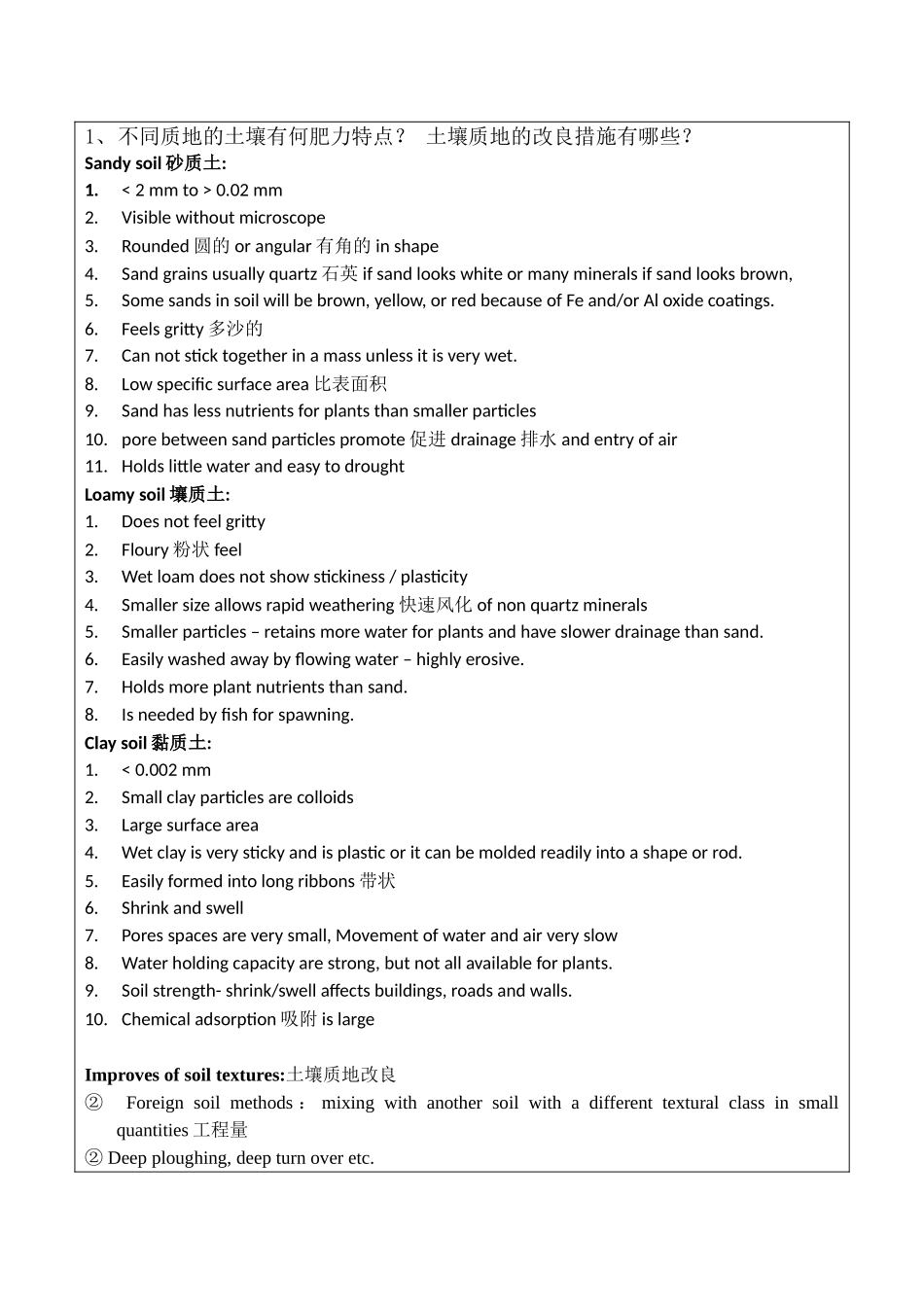本试卷适用范围资环 11、12南京农业大学试题课程 土壤学 班级 学号 姓名 成绩 一、土壤名词英汉互译(15%)1、 英译汉:(1) Pedosphere 土壤圈 (2) Soil respiration 土壤呼吸 (3) Matric potential 基质势(4) Soil profile 土壤剖面 (5) Plastic index 塑性指数2、 汉译英: (1) 粘粒 clay (2)土壤容重 soil bulk density (3)土壤质地 Soil texture(4)矿物 mineral (5)土壤肥力与土壤质量 soil fertilizer and soil mass二、简答题(4 题中任选 2 题用英语回答,另外 2 题用中文回答)(15%)1、 What are the three phases of a soil? Liquid phase, solid phase, gas phase2、 Where does soil organic matter come from?Under forest 森林下 :littering 植物凋落物 、root exudates 根系分泌物、animal fecal 少量动物粪便in grasslands 草原下:dead plants、 dead animals 、 soil fauna under cultivation 农业土壤:root、straw return、manure 粪肥、waste、organic pollutants3、 What are the major differences in composition between soil air and atmosphere?1.The level of CO2 in soil is about eight times higher than the normal atmospheric level.2.The O2 level in soil air is slightly lower than it is in atmospheric air.3.Soil air usually is much higher in water vapor than is the atmosphere.4 . Also, under waterlogged conditions, the concentrations of gases such as methan(CH4)and hydrogen sulfide (H2S) are notably higher in soil air.4、 What are basic cations and acidic cations in soils?basic cation:Ca2+,Mg2+,K+, Na+ and NH4+ acidic cations:H+ and Al3+.三、选择题(10%)(请您将正确答案的编号填入括号内)1、 国际制土壤质地分类将粘粒定为( A )。 A、<0.002 mm; B、0.02-0.002 mm; C、2-0.02 mm; D、>2 mm;2、最适宜于农业生产的土壤结构为( D )。 A、块状;B、柱状; C 片状; D、团粒状;3、水分在饱和流动中的主要推动力为( D )。 A、溶质势; B、温度势; C、基质势; D、压力势4、 土壤水分再分布过程属于( B )。 A、饱和水流...


